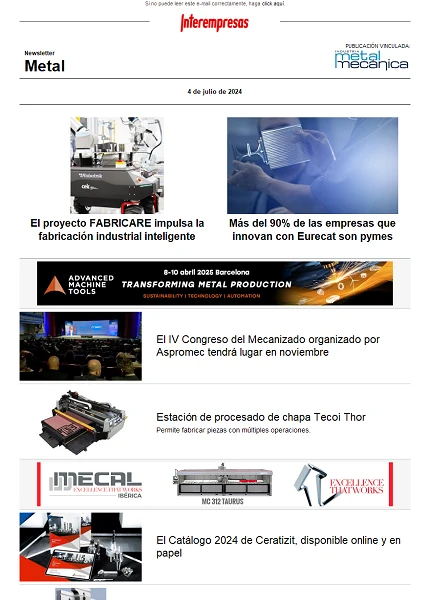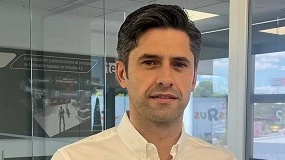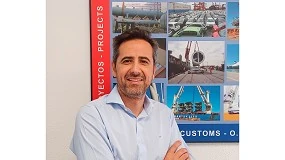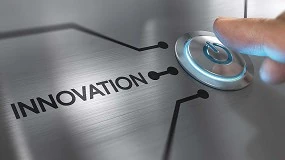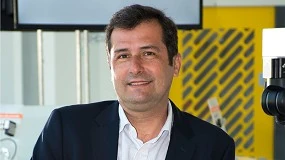Trends in Control open systems
Anyway the activity of the Department of Control and ICT is not only focused in the area of the advanced control. Thus, working in the development of management, monitoring and control in different areas, both industrial and social, combining the multisensory integration with ubiquitous computing and communication services.
After many years in which the technological offer of the Department has focused on these areas, and in accordance with new strategic lines of Fatronik, the Department has expanded the offer into the "socio-medical world", providing the technological basis in the form of devices and servicesfocused on the Group of persons with disabilities and older people. Finally, the research in the line of the assistive Robotics, complete the technological offer of this Department in constant evolution, and adaptation to the clear demands of current and future society.
This article describes one of the current activities of the Department of Control and ICT on themes of advanced control, based on the development of architectures for industrial controllers.
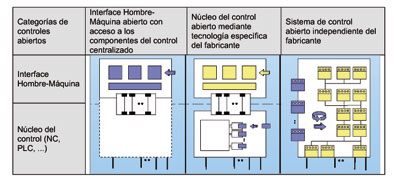
Open Control systems
The following table we can summarize the main differences between an open control system and a traditional system:
Traditional system (owner)
- Great effort of adjustment to the machine
- Specific know-how of the manufacturer of the machine hardly integrated into the control
- It is not possible to develop independent software
- High dependence on the manufacturer of the machine on the supplier's control
Open control system
- Modular topology with standard interfaces
- Different suppliers interoperable modules
- Topology and scalable performance
- Easy portability to other hardware platforms
In the market are increasingly more open controls, although each of them offers a different opening level. For this reason we will introduce the various possibilities:
Categories of open controls:
- Man-machine interface open with access to the components of the centralized control
- Core of the open control through specific technology of manufacturer
- Open control system independent of the manufacturer
It is very important to distinguish between different levels of opening provided by a control that it determines in a decisive way the possibilities of individualization of the control and functionality that is possible to integrate in each case. As shown in the figure, the fundamental distinction refers to the access provided to the core of the control, or only to the man-machine interface.
Currently the majority of open controls offer specific interfaces to access the information of the control, i.e. they are in the first case. There are other manufacturers that also facilitate software development tools that allow access and define the core of the control. And there is no supplier that offers an open control that is placed in the third case. It is important to introduce at this time the element real time, in this regard it must be said that in the first case the access offered to the information of the control does not guarantee the time of access and therefore synchronization. For this reason the data provided are useful if they are not subject to stringent time requirements (such as the managed at the core of the control) or if they are to be used to view them on the user interface.
In any case, since that emerged the notions from interfaces open (OSACA architecture [2]) the trend of the suppliers of controls has been in the direction of offering greater openness for the user, simplified in this way the integration of additional functionality and third-party software.
It goes without saying that a control system with independent of manufacturer interfaces can integrate components provided by other specialized suppliers by facilitating synergies among them. In addition, it simplifies the integration of additional functionality and third-party software; making it possible that the manufacturers of controls to be focused on the improvement of the most important thing in your product, control algorithms and exploit existing software to provide functionality related to the operating system or with the communication protocols.
The manufacturer of the machine it is benefited by the possibilities offered to integrate its own know-how and to specialize in particular components of the control. Examples include the implementation of coordinate transformations are essential in machines of parallel kinematics or components for control of the process of utility to adapt the behavior of the machine depending on the status of the process. In addition, simplifies the modification or replacement of the user interface without modifying the rest of the control. This allows to standardize the user interface of all the machine tools used in a plant regardless of the used control.
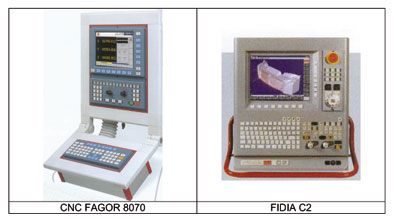
Open commercial Control systems
Therefore, its dependence on the hardware platform used is very strong. In recent years systems based on microprocessors have followed a trend of improving its capacity for the calculation of an accelerated way, even of could be exponential. This has contributed to the cycle of life of the hardware platforms on which develop control systems to be increasingly short. And controls manufacturers increasingly have less time to recover their investment in development of new products. The use of standard hardware platforms allows the manufacturer to use permanently latest microprocessors of the corresponding family, with the latest features on power of calculation, memory, etc.
Therefore there has been a trend towards the unification of the platforms hardware, platforms that provide microprocessors widely used for which there is plenty of options in terms of operating systems, environments of development, etc. These platforms include also large number of options for the use of large numbers of peripherals standard, such as storage (hard drives, flash memory), communications systems (lines series, parallel, USB, Ethernet), interaction with the user (video controllers and standard monitors)(keyboard and mouse). Ultimately, the use of standard hardware platforms allows a manufacturer take a lot of peripherals that otherwise should develop or integrate into its proprietary platform.
Today, the hardware platform based on PC technology is clearly the choice of the leading manufacturers of control systems. Its advantages can include:
- Low-cost.
- Availability of large number of suppliers and short delivery times.
- Very active in innovation, any new peripheral features its version for that platform.
- Availability of standards and protocols to support any type of device.
With regard to operating systems, the trend is the use of standard systems de facto as the family of Microsoft Windows. This provides immediate support for any device or peripheral developed for the PC platform. And it allows to have multiple environments for development and compilers for different programming languages, tools development and simulation, as well as large number of applications for management and treatment of the information, design, communications, etc. In short, any software application for the Windows family can be used.
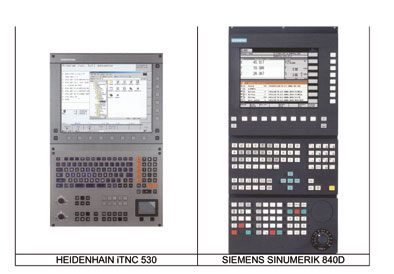
Finally, the communication between control and remote inputs / outputs modules, also tends strongly towards the use of standard field buses. There is a variety, but among the most commonly used include CAN, Profibus, DeviceNet, Interbus. As it was the case with communication systems described in the previous section, in this case there are manufacturers, which in addition to supporting various standards, have their own proprietary products. Finally, we must stress that the main manufacturers of numerical controls have platforms PC and Windows OS-based products. This is the case of numerical control Fagor 8070, Fidia, 840 Siemens , Heidenhain iTNC530, Fanuc.
The use of the Windows platform brings with it a number of advantages that we would hardly have if we we basáramos in proprietary operating systems:
- Access to the information available in the CNC machine tools.
- Improvement in the exploitation of the capabilities of open numerical controls.
- Benefits and advantages of the integration on a PC with Windows OS:
- Access to Local area network for transfer of files, remote execution of programs piece and access to resources in the enterprise network.
- Development of applications that provide new functionality through the use of standard software in the Windows environment development tools.
- Security provided by the operating system.
- Benefits arising from the possible use of other commercial applications developed for Windows.
References:
- "nacsa J.""Comparison of three different open architecture controllers" Proc. of IFA MIM pp. 134-138, Prague, Aug. 2001 (http://www.sztaki.hu/~nacsa/mim01-nacsa.pdf)
- OSACA Handbook Version 2.0 "OSACA Association, Stuttgart, 2001.






















